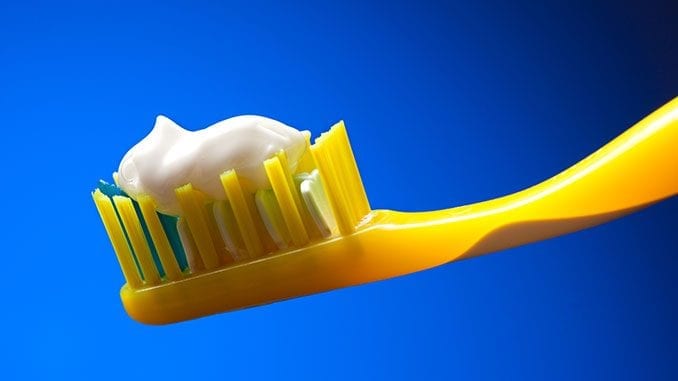
Research shows toothbrushes cause most common airway injury in children.
Published: February 1, 2020
By: University of Missouri Health Care
Reese White is just like any other second-grade girl. As the youngest of David and Kelley White’s four children, Reese is the only one in the household who isn’t tall enough to look at herself in the mirror above the bathroom sink.
Reese was getting ready for bed on March 18, 2018, using the mirror on the back of her parent’s door to help her brush her teeth. Kelley quickly opened the door into Reese, knocking the toothbrush through Reese’s mouth and into her throat.
“She didn’t start screaming or freaking out right away,” Kelley says. “She just went into my son’s room, and I heard him say, ‘What’s wrong with her? She’s bleeding!’ I ran into the room, and there was just blood everywhere.”
Upon arriving at the hospital, they discovered that Reese had a puncture wound in the back of her throat, close to the carotid artery that supplies blood to the brain. Any damage to that vessel could cause a life-threatening hemorrhage. “That’s when we realized it was serious, and we got really scared,” Kelley says.
Christopher Sampson, MD, a physician at the University of Missouri Health Care’s University Hospital, treated Reese. While the Whites considered Reese’s injury a “freak accident,” Sampson has seen enough of them that he wondered how common these cases are nationwide. He researched toothbrush injuries from 2006-16 and published his findings in the American Journal of Emergency Medicine earlier this year.
Sampson discovered 257 toothbrush incidents in the National Electronic Injury Surveillance System (NEISS) database. Based on the sample size, the NEISS database estimated there are more than 850 toothbrush injuries in the U.S. each year. “We found most of those injured by toothbrushes were 4 years old and younger,” Sampson explained. “A majority were seen in the emergency department and then discharged. But we found a significant number of cases that required sutures or surgery.” Toothbrush packages contain a warning label recommending adult supervision for children 3 and younger.
“Parents should make sure young children don’t wander away from the sink while brushing,” he says. “There are always risks if you are walking around or running with a toothbrush in your mouth. Just stand by the sink and focus on the job you’re doing.”
Courtesy of University of Missouri Health Care
